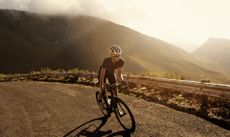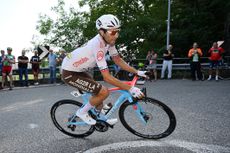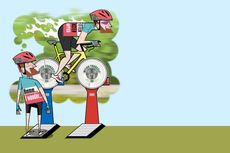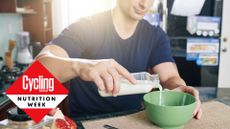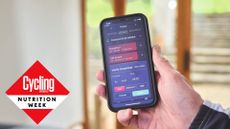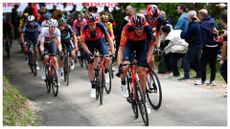The best energy gels for cycling 2024: what to look for and seven favorites
There's no doubting the benefit of downing a quick energy gel at vital points of a ride or race – here's a few of our favorites
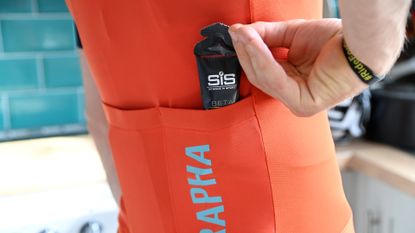
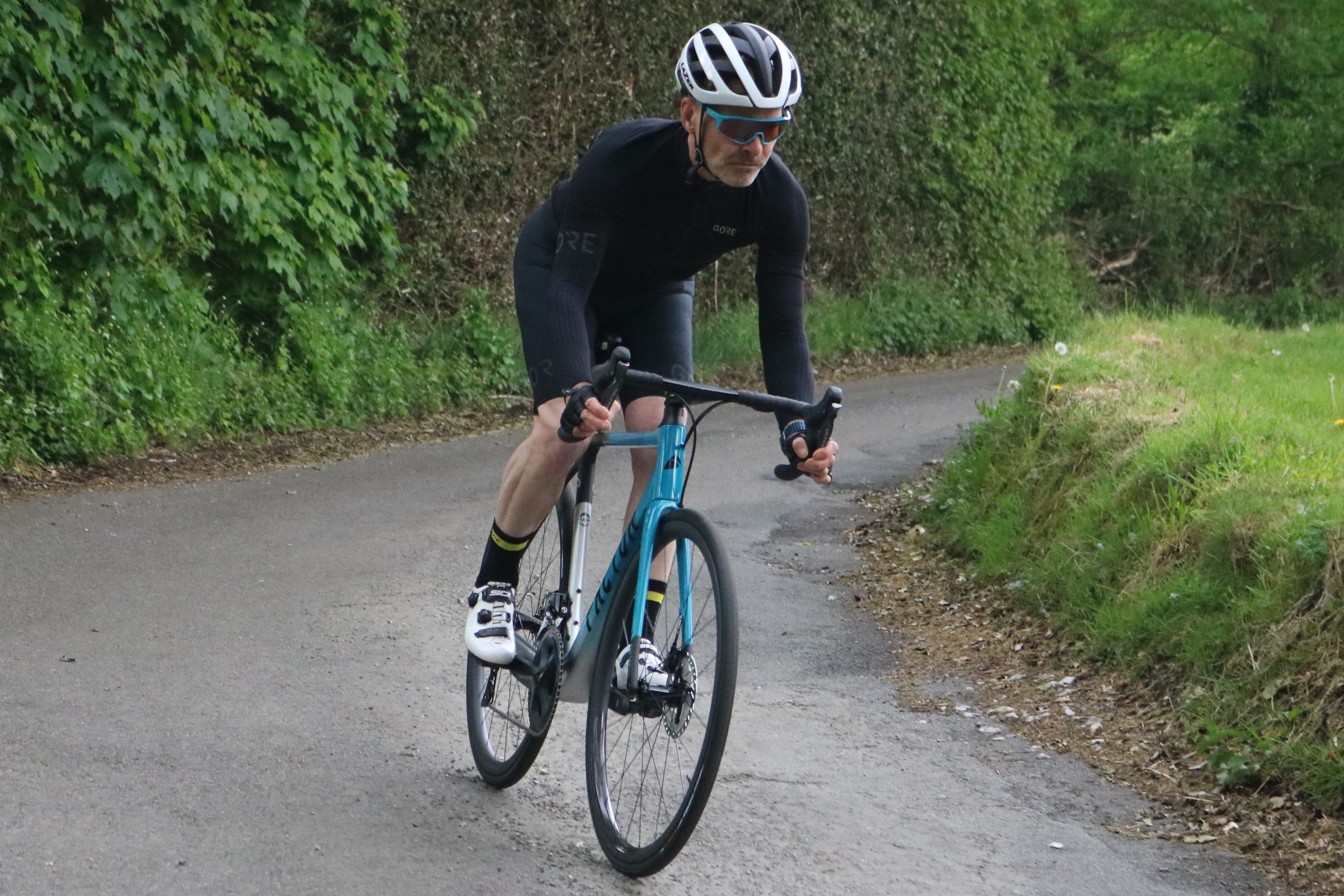
Best Energy Gels 2023: Jump Menu
Running out of energy during a ride or a race because you haven’t eaten properly is easily done. Even if you don’t completely bonk, if you’ve neglected to take on sufficient fuel your performance levels will suffer.
Eating and drinking little and often is your best defence. But what happens if you’re competing in an event such as road race or time trial, where chewing anything more than the metaphorical handlebars can become a chore? That’s when the humble energy gel comes into its own.
In essence, gels provide a carb heavy calorie kick designed to be quickly absorbed into the bloodstream. These sachets of gloopy paste are ideal when you need a quick hit or can no longer chew away on one of the best energy bars for cycling.
Due to their small size they can also be handy on longer rides, easily stored in a jersey pocket. However, if you’re not racing or competing we’d suggest opting for normal food where possible as it’s gentler on both your stomach and your bank balance.
We'll start off with our recommendations for some of the best energy gels for cycling. We'll then offer some advice on how and when to best use them to help you get the most out of your ride.
The Quick List

Environmentally friendly
Each 40g sachet contains 23g of carbs. Buy them in a pack and High5 provide a prepaid envelope to return the wrappers for recycling.

Best for carbs
With 40g of carbs and 158kcal in each gel they're suited for rapid fueling. Thicker consistency means you'll need to wash them down though.

Best flavors
From Rhubarb & Custard to Raspberry Ripple, Torq has flavor options other gels can't match. Each 45g serving packs in 30g of carbs and 114 calories.

Gut friendly
Gluten, dairy and caffeine free and made with real fruit juices, it goes down easily and doesn't stress the gut. Contains 20g of carbs plus electrolytes.

Reduces fatigue
Thicker in consistency but packing a punch they contain amino acids designed to reduce fatigue and meet energy demands when you start running low on carbs.

Sugar free
Each 60ml gel contains 22g of carbs and 89kal but no sugar. Designed to absorb quickly and be friendly to your stomach, with caffeine-free options available.
The Best Energy Gels for Cycling: Our top picks
Best for the environment

1. High5 Energy Gel
Our expert review:
Specifications
Reasons to buy
Reasons to avoid
The High5 energy gel comes in 40g sachets, with each containing 23g of carbs. Some gels aren't that palatable due to their consistency and taste. High5 has sought to address both these issues by opting for a light consistency that's designed to go down smoothly, combined with the use of real fruit juices for improved taste.
On test we felt it delivered on both counts. The flavor was authentic and avoided the sickly sweet taste that some gels deliver. The consistency was also good although we opted to use one gel per hour rather than the suggested three - choosing to get the rest of our nutrition needs from drinks and bars.
As a product, the High5 gel should appeal to those who want their gels to contain natural flavorings while at the same time avoiding colorings and artificial sweeteners. They're also suitable for both vegetarians and vegans.
If you buy High5 gels in a pack they'll provide a prepaid envelope so you can return your gel wrappers for recycling, which should help discourage the discarded gel wrappers which are a feature of many popular cycling routes.
Alongside its standard gels, reviewed here, High5 makes gels with caffeine, gels with electrolytes, gels with slow release carbs and the Energy Gel Aqua which is designed to avoid the need for extra water to wash it down.
Best for quick carb loading

2. SiS Beta Fuel gel
Our expert review:
Specifications
Reasons to buy
Reasons to avoid
Alongside its longstanding Go gels, SiS now has a gel formulation of its Beta Fuel, which was previously only available as a drink. It contains a high value of 40g of carbohydrates per gel in a mix of maltodextrin and fructose in a 1:0.8 ratio, which SiS says is optimum for rapid fuelling. Each energy gel packs 158kcal and SiS claims that its formulation avoids gastric discomfort.
As you'd expect with such a high carbohydrate content, we found the Beta Fuel gels to be quite thick, so you will probably need a swig of water to wash them down.
SiS sells the Beta Fuel gel in two flavors: orange and strawberry/lime. There are also apple and lemon/lime flavors with nootropics, which include caffeine and taurine (as found in Red Bull) and are claimed to help maintain cognitive function, while avoiding the jitters that caffeine can produce on its own.
Best for flavor choice

3. Torq Energy Gel
Our expert review:
Specifications
Reasons to buy
Reasons to avoid
When it comes to distinctive flavors Torq gels take the biscuit. Or actually the Cherry Bakewell. And if that café stop classic isn't to your liking there's also Lemon Drizzle, Apple Crumble, Rhubarb & Custard and others.
But apart from delivering flavors straight from a desert menu, what are the other potential benefits of this particular gel?
Torq uses a 2:1 maltodextrin:fructose carbohydrate mixture, which studies suggest can increase absorption capacity. Each sachet delivers 114 calories and 30g of carbs per 45g serving. You also get five key electrolytes: sodium, chloride, magnesium, potassium and calcium.
The consistency or texture is listed by Torq as 'wet'. Even still it recommends that the gels are used in conjunction with its energy drinks. If you prefer a gel that can be used in isolation then the SIS GO product could well be a better option. However, with regards to a carbs-to-weight ratio, the Torq gel does deliver a pretty big punch.
There are 12 flavors to choose from, the majority of which are free from caffeine, but four contain 89mg of caffeine, delivered via the plant guarana. The caramel latte supplements the guarana with real coffee.
Torq designs its packaging so that the tab should stay attached to the gel when you open it, so you're not left with a piece of plastic in your mouth to spit out onto the road or try to get back in a pocket.
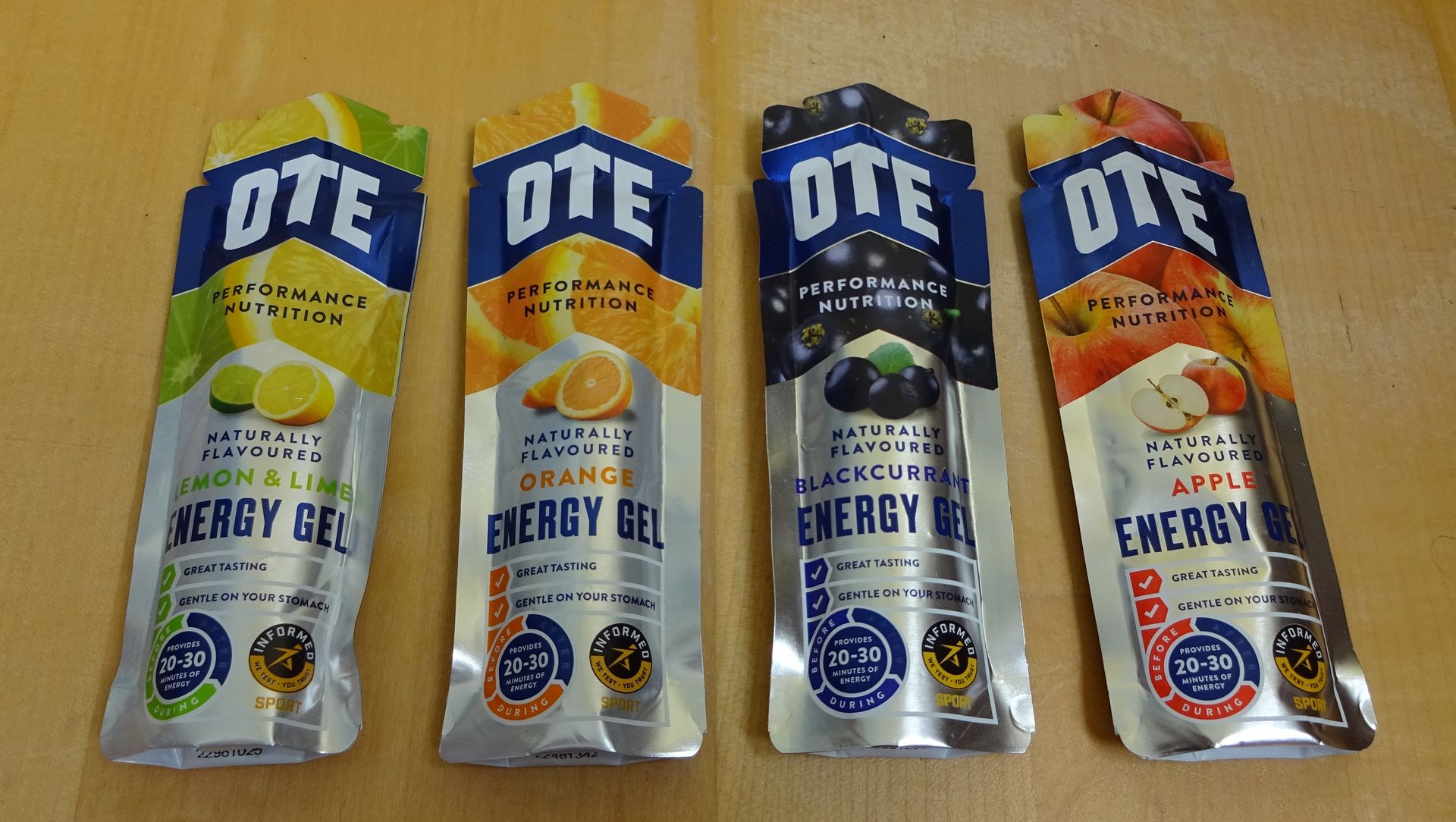
Best for sensitive stomachs
4. OTE energy gel
Our expert review:
Specifications
Reasons to buy
Reasons to avoid
OTE gels are designed to be kind to your stomach. This will be music to the ears of anyone who's suffered with tummy troubles thanks to (over) consumption of gels.
Certainly the texture of the gel seems to be designed to go down easily. With a fluid consistency, we found they're well suited to high-intensity efforts, and real fruit juices provide tasty flavors without putting too much stress on your gut.
They're gluten, dairy and soya-free, and also fine for vegans – and OTE provides two perforated tear strips, so you can sip or gulp depending on your needs at the time. The regular gels are caffeine free. However there is a caffeine variety, which provides 100mg of 'rocket fuel' from guarana.
As well as delivering just over 20 grams of carbs per servings OTE's gels also contain electrolytes to help replace the salts you've lost while sweating. Combined with the thinner consistency this points to OTE gels being a good match for hot weather cycling.
That said, we found that the regular gels are quite bulky and the carbs delivered are lower than some competitors, so keeping fuelled on longer rides could be difficult. So OTE also sells Super Gels, which pack twice as much carbohydrate into a 66g gel if you're looking for extra fuel.
Best for fatigue avoidance

5. Hammer Gel
Our expert review:
Specifications
Reasons to buy
Reasons to avoid
The Hammer gels are compact, but pack a lot of energy - more than OTE in a package that's only 60 per cent the size. As you'd expect, that makes for a much thicker consistency - we found that we needed to have a good slurp of water to wash it down.
Hammer makes its gels with maltodextrin, but supplements this with a mix of grape juice and rice dextrin, which provides much of the fruit flavor. There's also a selection of branched chain amino acids, designed to reduce fatigue, and L-alanine, which is an amino acid that Hammer says helps meet energy demands when you start running low on carbs.
There are two flavors with caffeine: espresso (obviously) with 50mg and tropical with 25mg.
There are no less than ten flavors to choose from and the unit price is less than many competitors. Hammer also sells its gels in a 26 serving bottle, making the cost per gel even lower if you have a suitable container to use when riding or want to mix the gel in water.
Best for low sugar content

6. NamedSport Isotonic Power Gel
Our expert review:
Specifications
Reasons to buy
Reasons to avoid
NamedSport's orange logos and inflatables are everywhere at Italian pro cycle races and the brand has quickly become a fixture of the cycling scene. It sells its energy gels in a wide range of formats and volumes from 25ml up to 100ml per pack.
The Isotonic Power Gels sit in the middle of this range. As their name says, they're designed to match the osmolarity of your gut and so avoid gut problems.
Alongside maltodextrin, their carb content comes from "highly branched cyclic dextrin", which NamedSport says leads to quicker absorption with lower gastroenteric side effects. There's also the artificial sweetener sucralose in there, added as the carbs come entirely from more complex sugars that are less sweet. There are caffeinated and caffeine-free options available.
Despite their large format, the NamedSport gels are quite viscous, so a slurp of water helps when consuming them, even if NamedSport says that it's not needed.
Best for ease of use

7. Clif Bloks energy chews
Our expert review:
Specifications
Reasons to buy
Reasons to avoid
When is a gel not a gel? When it's a Clif Blok. Clif has abandoned its gels, which were very gloopy and hard to eat, if tasty, in favor of energy chews.
These have the advantage that you're not left with messy wrappers to carry and we also find that they're easier to open without getting goo all over you. You can also regulate your dose, with each Blok providing 30kcal of energy, helping to avoid the single dose sugar rush that a gel can deliver.
The flip side is that they're harder to ingest, as you need to chew them as you ride. They're a lot easier to chew than an energy bar though in our experience and can be consumed "on the side" more easily as you ride, although as with a bar you probably need some water to wash them down.
The format is also more compact than a gel, while delivering more energy, making it easier to carry fuel for longer rides. There's a range of five flavors available, two with caffeine when you need that extra stimulation to get you to the finish line.
Buyer's guide to the best energy gels
Here's all you need to know about how to use energy gels and where they fit into your on-bike nutrition strategy.
How many energy gels should I consume?
Energy requirements vary between individuals, increasing with intensity. The general rule of thumb is to feed yourself with one gram of carbohydrate per kilo of body weight, each hour – so a 60 kilogram individual should aim for 60 grams an hour, while an 80kg rider would need around 80g.
Consuming too much carbohydrate means it'll be surplus and go to waste – however, some manufacturers mix their glucose with fructose (fruit sugar) – and research has shown that this can increase absorption to 90g an hour.
Some gels come with additives such as caffeine. Studies have shown that caffeine can boost performance when administered in the correct dosage - but the milligrams per average cup of coffee can vary wildly. The amount in a gel will always be uniform and thus dosage can be properly tailored to requirement.
There's one other really important thing to remember: make sure you take your empty packets home. Cycling Weekly is fed up with seeing discarded used gels out on the lanes, even if they accidentally fell out. Let's leave no trace when we go out riding.
How long do energy gels take to kick in?
This will vary from person to person. We all absorb carbohydrates at different rates but regardless of this the process is the same.
It starts with amylase. It's an enzyme that's found in your mouth and whose job it is to break down the more complex carbs found in the gel. After this another enzyme, pancreatic amylase, takes up the slack as the gel moves into your small intestine. After that it's down to transporter proteins found in the gut. They absorb the glucose and other sugars, helping to pass them into the blood stream.
Fortunately gels are designed to act quickly, delivering you the energy you crave in quick time - this could translate to a few minutes for some or perhaps 15 minutes for others.
There are usually simple sugars in there, alongside the more complex carbs like maltodextrin, which don't require enzymes to break them down before they're absorbed by the gut, giving you a mix of a quick sugar rush and a longer energy flow from the more complex carbs.
What's the difference between energy gels, drinks and bars?
There's plenty of talk around fuelling your rides with fat or even adding protein – but most nutritionists still argue that, during exercise, carbs are king. You'll need to top up your carb stores on rides over 90 minutes; anything shorter and your body can usually sustain itself on existing reserves.
The best energy bars, gels and drinks all provide carbohydrates and all three products have their place. If you're unsure of what you should be eating and drinking to best fuel your rides you can also check out our guide to nutrition for cycling.
Energy drinks are the quickest to be absorbed but are designed for repeated 'top ups' via regular sips. The 100-200 calories and approx. 20g of carbohydrate per sachet will be spaced out over the hour-plus it takes you to get through a bottle. As a sweet bonus, they contain added electrolytes to replace those lost through sweat.
Gels, meanwhile are the second quickest to be absorbed but are taken in doses – delivering up to 100 calories in one go, making them ideal for a quick surge when you need it.
Energy bars are usually slower release – but require breaking up and chewing and washing down with water, so they're best for Zone 2 endurance rides.
Get The Leadout Newsletter
The latest race content, interviews, features, reviews and expert buying guides, direct to your inbox!
Paul started writing for Cycling Weekly in 2015, covering cycling tech, new bikes and product testing. Since then, he’s reviewed hundreds of bikes and thousands of other pieces of cycling equipment for the magazine and the Cycling Weekly website.
He’s been cycling for a lot longer than that though and his travels by bike have taken him all around Europe and to California. He’s been riding gravel since before gravel bikes existed too, riding a cyclocross bike through the Chilterns and along the South Downs.
-
 2024 should be the year of achievable cycling goals
2024 should be the year of achievable cycling goalsDon’t overstretch yourself or push too hard, but aim for targets you can hit
By Adam Becket Published
-
 Larry Warbasse claims what could be the world's toughest Strava KOM
Larry Warbasse claims what could be the world's toughest Strava KOMThe 89.5km Mauna Kea climb in Hawaii rises from sea-level to 4,214 metres with steep gravel sections on the way
By James Shrubsall Published
-
 How to lose weight cycling without sacrificing strength
How to lose weight cycling without sacrificing strengthIf you're looking to lose weight cycling, here is a quick guide to reduce that number on the scales to improve your riding
By Dr Eimear Dolan Published
-
 Six foods to avoid before a bike ride and why
Six foods to avoid before a bike ride and whyWe take a look at some of the staples you should steer clear of before heading out on a ride
By Anna Marie Abram Published
-
 Ask a coach: 'How much should I expect to eat on a 100-mile ride?'
Ask a coach: 'How much should I expect to eat on a 100-mile ride?'It's important to stay fuelled, but just how much food does that mean you should bring?
By James Spragg Published
-
 I lowered my body fat by 4.4% after using a nutrition app for 7 weeks
I lowered my body fat by 4.4% after using a nutrition app for 7 weeksCould a smartphone app be the key to hitting your nutritional needs and reaching your riding goals?
By Simon Fellows Published
-
 It’s ‘Nutrition Week’ on Cycling Weekly - here’s how to ensure you’re optimally fuelled to hit your riding goals
It’s ‘Nutrition Week’ on Cycling Weekly - here’s how to ensure you’re optimally fuelled to hit your riding goalsFrom the 24th-28th July here at Cycling Weekly, we’ll be doing our bit to provide you with tips on how to what you need nutrition-wise, and where to get it
By Anna Marie Abram Published
-
 Five nutrition questions answered by an Ineos Grenadiers expert
Five nutrition questions answered by an Ineos Grenadiers expertWe put some hot fuelling topics to Dr Marc Fell, performance nutritionist for Ineos Grenadiers
By Sponsored Published
-
 Eating for optimal recovery
Eating for optimal recoveryHow INEOS Grenadiers use Science in Sport to fuel their recovery
By Sponsored Published
-
 What to drink when cycling - the liquids you need on the bike
What to drink when cycling - the liquids you need on the bikeNot all liquid is created equal - we explain the different types of fluid that'll help you ride further
By Luke Friend Published
